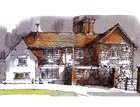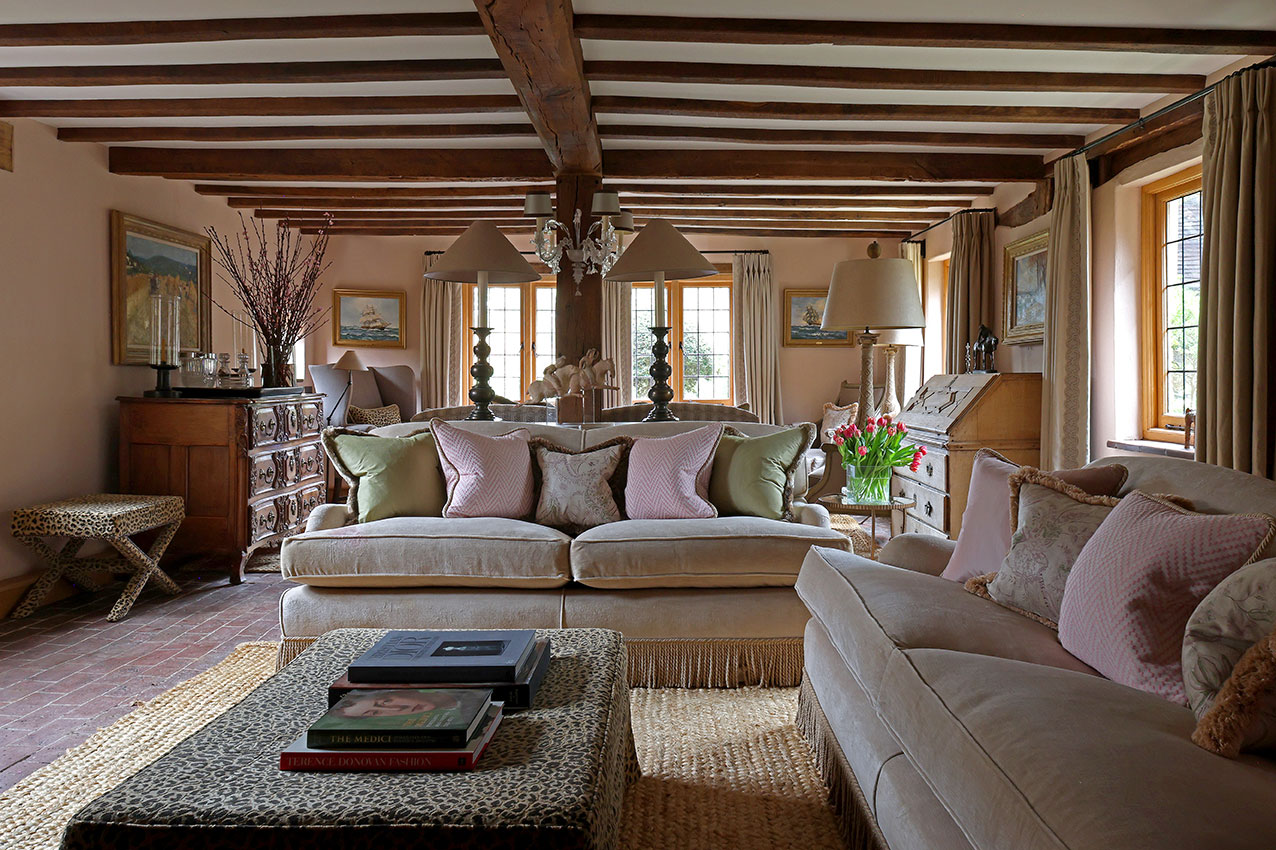Perfect roof pitches
Conservationist and architect Ptolemy Dean points out the importance of roof angle


One of the most enjoyable opportunities for an architect is to be asked to work on a country house. There are broadly two types: the first is the classic, highly listed and venerable building, set in a beautiful park. Here, the work is usually confined to modest internal alteration, external repairs and landscape improvements. The other grouping of houses is the more challenging. These are the lower grade of listed (or unlisted) buildings, often no less beautifully sited, but usually completely mutilated. Whether this has occurred through the casual neglect of years of tenant farmers, or by the deliberate application of mean spirited (and often recent) alterations, the difficulty remains. How can such buildings be redeemed? One house in rural Buckinghamshire enjoys spectacular views and a convenient location within reach of the M40. But what a dog's dinner it has become. A small white gable on the left is, in fact, a fragment of a 16th-century range, subsumed in newer additions that are ungainly and elephantine. Setting aside the awful 'off the peg' windows and that ridiculous porch, effort has been made to use old roof tiles, local flint and brick. But look carefully at the roof, and in particular the right hand gable, and all is made clear. The modern roof pitch has been made at a 'standard' 45 degrees. When comparing it to the steeper pitch of the old whitewashed range, it somehow seems wrong. I was once taught that the most satisfying roof pitch was between 52× and 53×, and it is interesting to discover that the old part of our Buckingham house has its roof at an angle of 52.7×. Of course, one cannot make sweeping generalisations about roof pitches. This is not an exact science. Some lovely Regency houses have very shallow roofs, and some beautiful old abbey houses have very steep ones. In the past, much of this depended on the rain shedding capacity of the materials used to cover the roof. But when considering additions, we must obviously seek to avoid what Sir Edwin Lutyens reportedly termed 'the ugly angle' the pitch of 45×. In the 1960s and 1970s, when contemporary architects slid their adjustable set squares across the page, the unadjusted angle at 45× was the easiest to draw. But now that computers prepare most of the drawings, there can be no excuse for such expedience. We need to consider roof pitches with great care if the blunders of the past are to be avoided. When all else fails, and the roof has to stay, it can be trimmed right back and concealed by a parapet, something the right-hand portion of this house is shortly to gain.
- Always avoid a pitch of 45×.
- Try and match existing roof pitches when adding to an old building.
- Do not be shy about considering steeper roof pitches, which can be very attractive.
Sign up for the Country Life Newsletter
Exquisite houses, the beauty of Nature, and how to get the most from your life, straight to your inbox.
Country Life is unlike any other magazine: the only glossy weekly on the newsstand and the only magazine that has been guest-edited by HRH The King not once, but twice. It is a celebration of modern rural life and all its diverse joys and pleasures — that was first published in Queen Victoria's Diamond Jubilee year. Our eclectic mixture of witty and informative content — from the most up-to-date property news and commentary and a coveted glimpse inside some of the UK's best houses and gardens, to gardening, the arts and interior design, written by experts in their field — still cannot be found in print or online, anywhere else.
-
 The loos of Buckingham Palace: Country Life Quiz of the Day, April 23, 2025
The loos of Buckingham Palace: Country Life Quiz of the Day, April 23, 2025Wednesday's Quiz of the Day looks at St George, royal toilets and German alcohol laws.
By Toby Keel Published
-
 Moore Design
Moore DesignMoore Design is a boutique interior design practice with clients around the UK and overseas.
By Country Life Published
